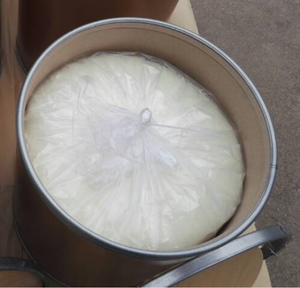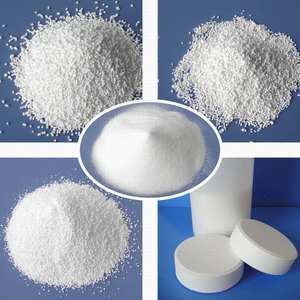L-Pyroglutamic acid 98-79-3
Min.Order / FOB Price:Get Latest Price
| 1 Metric Ton |
FOB Price:USD 1000.0000 -1500.0000 |
- Min.Order :1 Metric Ton
- Purity: 99%
- Payment Terms : L/C,T/T,
Keywords
98-79-3 L-Pyroglutamic acid L-Pyroglutamic acid 2-pyrrolidone-5-carboxylate
Quick Details
- Appearance:Powder
- Application:Organic Chemicals
- PackAge:as requested
- ProductionCapacity:100|Metric Ton|Year
- Storage:room temperature
- Transportation:by sea
Superiority:
L-Pyroglutamic acid Basic information
Characteristics and Application Pyroglutamic acid Preparation Glutamic acid Chemical Properties Uses Production method
Product Name: L-Pyroglutamic acid
Synonyms: (5s)-2-oxopyrrolidine-5-carboxylicacid;(s)-5-oxo-2-pyrrolidinecarboxylicacid;(s)-pyroglutamicacid;2-benzothiazolesulfenicacidmorpholide;2-l-pyrrolidone-5-carboxylicacid;2-oxopyrrolidine-5-carboxylicacid;2-pyrrolidone-5-carboxylate;glutimicacid
CAS: 98-79-3
MF: C5H7NO3
MW: 129.11
EINECS: 202-700-3
Product Categories: Heterocycles;Pyrrolidine series;chiral;Pyroglutamic acid [Pyr, pGu];Unusual Amino Acids;Amino Acids;Biochemistry;Biological-modified Amino Acids;Amino acid;for Resolution of Bases;Optical Resolution;Synthetic Organic Chemistry;Amino Acids;Nutraceuticals
Mol File: 98-79-3.mol

L-Pyroglutamic acid Chemical Properties
Melting point 160-163 °C(lit.)
alpha -27.5 º (c=10, 1 N NaOH)
Boiling point 239.15°C (rough estimate)
density 1.3816 (rough estimate)
refractive index -10 ° (C=5, H2O)
storage temp. Store at RT.
solubility H2O: 1 M at 20 °C, clear, colorless
form Crystalline Powder
pka 3.32(at 25℃)
color White to off-white
PH 1.7 (50g/l, H2O, 20℃)
optical activity [α]20/D 10.5±1°, c = 5% in H2O
Water Solubility 10-15 g/100 mL (20 ºC)
Merck 14,8001
BRN 82132
Stability: Stable. Incompatible with bases, acids, strong oxidizing agents.
CAS DataBase Reference 98-79-3(CAS DataBase Reference)
NIST Chemistry Reference Pidolic acid(98-79-3)
EPA Substance Registry System 5-Oxo-L-proline (98-79-3)

L-Pyroglutamic acid Usage And Synthesis
Characteristics and Application Human skin contains a kind of moisturizing functional water-soluble substances-the natural moisturizing factor, roughly consisting of amino acids (40%), pyroglutamic acid (12%), inorganic salts (Na, K, Ca, containing 18.5% Mg, etc.), and other organic matter (including 29.5%). So, pyroglutamic acid is one of the major components of natural moisturizing factor of the skin, its moisturizing ability is far stronger than glycerin and propylene glycol. Moreover, it is non-toxic, non-irritating, and is an excellent raw material for modern skin care, and hair care cosmetics. Pyroglutamic acid also has inhibitory effect on the tyrosine oxidase activity, and thus preventing "melanoidins" substance from being deposited in the skin, and having a whitening effect on the skin. It has a keratin softening effect which can be used in nail cosmetics. In addition to be applied in cosmetics, L-pyroglutamic acid derivatives can also have reaction with a number of other organic compounds for synthesis of derivatives. It also has some special effect on the surface activity and brilliant effect. Moreover, it can also be used as surfactants for detergents; as a chemical reagent, it can be used for the resolution of racemic amines; it can also be used as a kind of organic intermediates.
L-pyroglutamic acid has its scientific name being L-2-pyrrolidone-5-carboxylic acid. Precipitation from ethanol and petroleum ether mixture were colorless orthorhombic bipyramid crystals with the melting temperature being 162~163 °C. It is soluble in water, alcohol, acetone and acetic acid, slightly soluble in ethyl acetate, and insoluble in ether. Specific rotation-11.9 ° (c = 2, H2O). It is produced from 42% aqueous solution of glutamic acid which subjects to heating dehydration, concentration, crystallization, washing and drying to obtain L-pyroglutamic acid.
Details:
L-Pyroglutamic acid Basic information
Characteristics and Application Pyroglutamic acid Preparation Glutamic acid Chemical Properties Uses Production method
Product Name: L-Pyroglutamic acid
Synonyms: (5s)-2-oxopyrrolidine-5-carboxylicacid;(s)-5-oxo-2-pyrrolidinecarboxylicacid;(s)-pyroglutamicacid;2-benzothiazolesulfenicacidmorpholide;2-l-pyrrolidone-5-carboxylicacid;2-oxopyrrolidine-5-carboxylicacid;2-pyrrolidone-5-carboxylate;glutimicacid
CAS: 98-79-3
MF: C5H7NO3
MW: 129.11
EINECS: 202-700-3
Product Categories: Heterocycles;Pyrrolidine series;chiral;Pyroglutamic acid [Pyr, pGu];Unusual Amino Acids;Amino Acids;Biochemistry;Biological-modified Amino Acids;Amino acid;for Resolution of Bases;Optical Resolution;Synthetic Organic Chemistry;Amino Acids;Nutraceuticals
Mol File: 98-79-3.mol

L-Pyroglutamic acid Chemical Properties
Melting point 160-163 °C(lit.)
alpha -27.5 º (c=10, 1 N NaOH)
Boiling point 239.15°C (rough estimate)
density 1.3816 (rough estimate)
refractive index -10 ° (C=5, H2O)
storage temp. Store at RT.
solubility H2O: 1 M at 20 °C, clear, colorless
form Crystalline Powder
pka 3.32(at 25℃)
color White to off-white
PH 1.7 (50g/l, H2O, 20℃)
optical activity [α]20/D 10.5±1°, c = 5% in H2O
Water Solubility 10-15 g/100 mL (20 ºC)
Merck 14,8001
BRN 82132
Stability: Stable. Incompatible with bases, acids, strong oxidizing agents.
CAS DataBase Reference 98-79-3(CAS DataBase Reference)
NIST Chemistry Reference Pidolic acid(98-79-3)
EPA Substance Registry System 5-Oxo-L-proline (98-79-3)
L-Pyroglutamic acid Usage And Synthesis
Characteristics and Application Human skin contains a kind of moisturizing functional water-soluble substances-the natural moisturizing factor, roughly consisting of amino acids (40%), pyroglutamic acid (12%), inorganic salts (Na, K, Ca, containing 18.5% Mg, etc.), and other organic matter (including 29.5%). So, pyroglutamic acid is one of the major components of natural moisturizing factor of the skin, its moisturizing ability is far stronger than glycerin and propylene glycol. Moreover, it is non-toxic, non-irritating, and is an excellent raw material for modern skin care, and hair care cosmetics. Pyroglutamic acid also has inhibitory effect on the tyrosine oxidase activity, and thus preventing "melanoidins" substance from being deposited in the skin, and having a whitening effect on the skin. It has a keratin softening effect which can be used in nail cosmetics. In addition to be applied in cosmetics, L-pyroglutamic acid derivatives can also have reaction with a number of other organic compounds for synthesis of derivatives. It also has some special effect on the surface activity and brilliant effect. Moreover, it can also be used as surfactants for detergents; as a chemical reagent, it can be used for the resolution of racemic amines; it can also be used as a kind of organic intermediates.
L-pyroglutamic acid has its scientific name being L-2-pyrrolidone-5-carboxylic acid. Precipitation from ethanol and petroleum ether mixture were colorless orthorhombic bipyramid crystals with the melting temperature being 162~163 °C. It is soluble in water, alcohol, acetone and acetic acid, slightly soluble in ethyl acetate, and insoluble in ether. Specific rotation-11.9 ° (c = 2, H2O). It is produced from 42% aqueous solution of glutamic acid which subjects to heating dehydration, concentration, crystallization, washing and drying to obtain L-pyroglutamic acid.
You Might Also Like
-
High Grade4-Fluoro-1,3-dioxolan-2-one 114435-02-8 Fast Delivery
CAS NO:114435-02-8
-
N-LAURYLDIETHANOLAMINE 1541-67-9
CAS NO:1541-67-9
-
423-55-2 PERFLUOROOCTYL BROMIDE
CAS NO:423-55-2
-
PENTAMETHYLDISILOXANE 1438-82-0
CAS NO:1438-82-0
-
124-41-4 CH3NaO Sodium methanolate
CAS NO:124-41-4
-
409071-16-5 C2BF2LiO4 Lithium difluoro(oxalato)borate(1-)
CAS NO:409071-16-5
Related Searches
About|Contact|Cas|Product Name|Molecular|Country|Encyclopedia
Message|New Cas|MSDS|Service|Advertisement|CAS DataBase|Article Data|Manufacturers | Chemical Catalog
©2008 LookChem.com,License: ICP
NO.:Zhejiang16009103
complaints:service@lookchem.com Desktop View